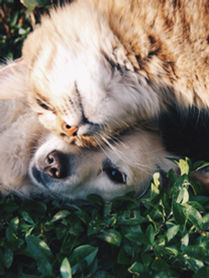
Introduction and Methodology
INTRODUCTION
The Humane Society of Indianapolis faces the challenge of communicating effectively with other shelters to be able to transport small dogs back to Indianapolis. The Indy Humane is also in need of a transportation system which allows them to visit several shelters within the same day effectively.
Indy Humane needs to be able to get dogs from other shelters because they often run into the problem of being short in supply of small dogs for adoption. What we decided to recommend is for them to use a certain app of our choosing to be able to route directions from one shelter to another in the most efficient way possible. The App that we decided to recommend allows the routing of up to 26 locations. Being able to plug in all of the addresses with dogs that they need will greatly benefit them because it will save time and money. Along with the recommendation of an app we decided to create a list of shelters around Indiana along with their Facebook pages. The creation of a Facebook page will enable and facilitate communication among shelters in Indiana. With a Facebook the Indy Humane can receive messages and notifications regarding small dogs that are available for adoption.
METHODOLOGY
As the purpose of this research project was to create a canine transport plan in Indiana, research was extensive. It was necessary to find out how other shelters transport animals, how to reach a large number of shelters to contact them about involvement in a transport program, and how to identify a useful mapping tool. The IUPUI library databases were very useful in completing research and finding relevant academic articles. In addition to all of this, research was done by finding contact information for different shelters in Indiana and inputting their information into a spreadsheet. A local study was also done by creating a survey from the tool Survey Monkey and sending the survey out to previously gathered email addresses of different animal shelters in the state of Indiana. The results of this survey were then analyzed in order to provide Indyhumane with the best recommendation possible.
Online Research
Literary Research
After meeting with Kirsten VantWoud we had a pretty good understanding of what we needed to be looking for in order to best make a recommendation for this project. We divided the research tasks up into two categories, with two team members per category. One category was researching how to reach out and connect different shelters in order to best communicate about canine transport. The other category was how to best create a mapping system so that shelter staff members and volunteers are efficiently using their time. Using EBSCO, a dignified research provider, we found that sending a mass email to invite different shelters to a private Facebook page would be the best way for shelters to contact each other. Further research found that having a Facebook page as common ground is a good idea because it allows all shelters to see how many animals need to be transported, while also allowing the shelters to share photos of the dogs they wish to transport.
Through searching both free and paid multiple stop route planning software, we found through multiple Google searches and trial and error testing that MapQuest works just as well as many paid mapping options and has great user interface. Therefore, as a free an effective software, MapQuest is the best option for Indyhumane's transport program. Additionally, more research, found through EBSCO, found that Google maps was the best alternative to MapQuest for creating a route. Google Maps is available for computers and smartphones, free, and has a great user interface. Not to mention, it is one of the most commonly used mapping applications. Therefore, most people are already familiar with how it works and will not need to learn how to use a new program.
Local Study
Creating a list of Contact Information
An essential step of this research project was to come up with a comprehensive list of all the shelters in Indiana and their contact information. This way, Indyhumane is able to have easy access to different shelters and a way to contact them about transporting animals. In order to do this, we started with an Excel sheet given to us by Kirsten VantWoud. We added the columns ‘email’ and ‘phone’ to the spreadsheet and began googling each shelter finding their contact information. When we came across a shelter that only carried cats or exotic animals, we noted this on the spreadsheet as small dogs are the main transport focus in this project.
Survey
Another important part of our primary research was creating a survey. The purpose of this survey was to get a better understanding of how different animal shelters in Indiana are currently handling animal transport, and how well these methods are working for them. The intended audience of this survey was different animal shelters in the state of Indiana. In order to distribute our survey, we sent out a mass email using the comprehensive shelter list and the contact information we had previously found. The survey was sent to the email addresses of about 70 shelter in Indiana, and our team received 25 responses. The low response rate was probably due to the fact that most shelters are busy with important matters and probably skipped over a simple survey from a group of college students. Given the results of this survey, our team was able to better make a recommendation to best suit the needs of Indyhumane and their new transport program.






